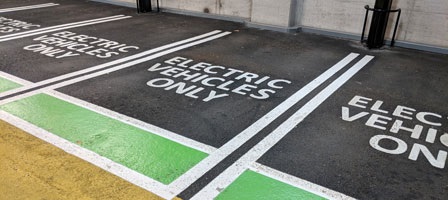Electric Vehicle Credit on the Decline
 Article Highlights:
Article Highlights: - Tax Credit
- Credit Phase-Out
- Tesla
- General Motors
- Determining the Credit
- Off-Road Vehicles and Golf Carts
- Allocation Between Business and Personal Use
- Credit Reduces Basis
- Business Standard Mileage
That limit is not a set number of vehicles, but rather a credit phaseout by manufacturer that is triggered when the manufacturer sells the 200,000th electric vehicle. Here is how the credit phase-out works:
Credit Phase-Out – The credit phases out beginning in the second calendar quarter following that in which a manufacturer sells its 200,000th plug-in electric drive motor vehicle for use in the U.S. The applicable percentage phase-out is:
- 50% for the first two calendar quarters of the phaseout period,
- 25% for the third and fourth calendar quarters of the phaseout period, and
- 0% for each later calendar quarter.
Example: Tesla, Inc., sold more than 200,000 vehicles eligible for the plug-in electric drive motor vehicle credit, reaching this sales level during the third quarter of 2018. Thus, a phase out of the tax credit available for purchasers of new Tesla plug-in electric vehicles was triggered beginning Jan. 1, 2019. This means the maximum credit available for the purchase of a Tesla, which was $7,500 before 2019, has begun to phase out and the maximum credits for 2019 are as follows for vehicles purchased: - Jan 1, 2019 through June 30, 2019: $3,750 (50% of $7,500).
- July 1, 2019 through Dec 31, 2019: $1,875 (25% of $7,500).
- After 2019, Tesla vehicles will no longer qualify for the credit.
If you are considering purchasing an electric vehicle, you may need to make that decision sooner than later since the credit for many popular models is beginning to phase out. Here are some things you should be aware of before making your decision to purchase an electric vehicle.
Not All Electric Vehicles Qualify for the Full Credit – The credit is not a flat $7,500; it is actually made up of two elements, a $2,500 per vehicle credit plus an additional $417 for each kilowatt hour of capacity in excess of 5 kilowatt hours, but not in excess of $5,000, resulting in an overall credit of up to $7,500.
The amount of credit available for any qualifying vehicle, listed by manufacturer is available on the IRS website. Although most salespeople will know the amount of credit that is available for the vehicle you are interested in purchasing, you sometimes run into an overzealous one that might mislead you a bit. So, it is good practice to double check for yourself and that is quite easy to do on the IRS Website.
The following requirements must be met to qualify for the credit.
- You are the owner of the vehicle. If the vehicle is leased, only the lessor and not the lessee, is entitled to the credit.
- You placed the vehicle in service during your tax year.
- The vehicle is manufactured primarily for use on public streets, roads, and highways.
- The original use of the vehicle began with you.
- You acquired the vehicle for use or to lease to others, and not for resale.
- You use the vehicle primarily in the United States.
Off-Road Vehicles & Golf Carts - Vehicles manufactured primarily for off-road use, such as for use on a golf course, do not qualify for the credit.
Allocation Between Business and Personal Use – When a taxpayer uses a qualified plug-in electric drive motor vehicle both personally and in the taxpayer’s business, the credit is divided (allocated) between personal use and business use and creates two separate credits, with the tax treatment of the two being quite different.
- Personal Credit – The personal portion of the credit is non-refundable, meaning the personal portion of the credit can only offset a taxpayer’s tax liability and any excess not used in the year of purchase is lost. Thus, taxpayers need to be mindful of just how much benefit the credit provides and not necessarily expect to benefit from the full amount of credit for the vehicle.
- Business Credit – The business use portion of the credit, on the other hand, becomes a business credit and any unused portion for the current year can be carried back to the prior tax year where it can offset tax liability in that year and result in a refund. If there is still unused credit it can carry forward for up to 20 years to offset future tax liabilities.
Business Standard Mileage – If a taxpayer uses a vehicle for business, they can choose between deducting actual expenses such as fuel, repairs, insurance, etc., or deducting a standard amount for each business mile driven. The standard mileage rate is determined periodically by the IRS using average costs of operating a vehicle. The IRS does not distinguish between fuel powered cars and electric cars, and both are allowed to use the same standard amount, even though the rate includes fuel costs. The business mileage rate for 2019 is 58 cents per mile, up from 54.5 cents per mile for 2018.
Call this office to determine how much benefit you will derive from the plug-in electric drive motor vehicle credit based upon your specific use of the vehicle, whether it is personal, business or a combination of the two.
|
|  |





